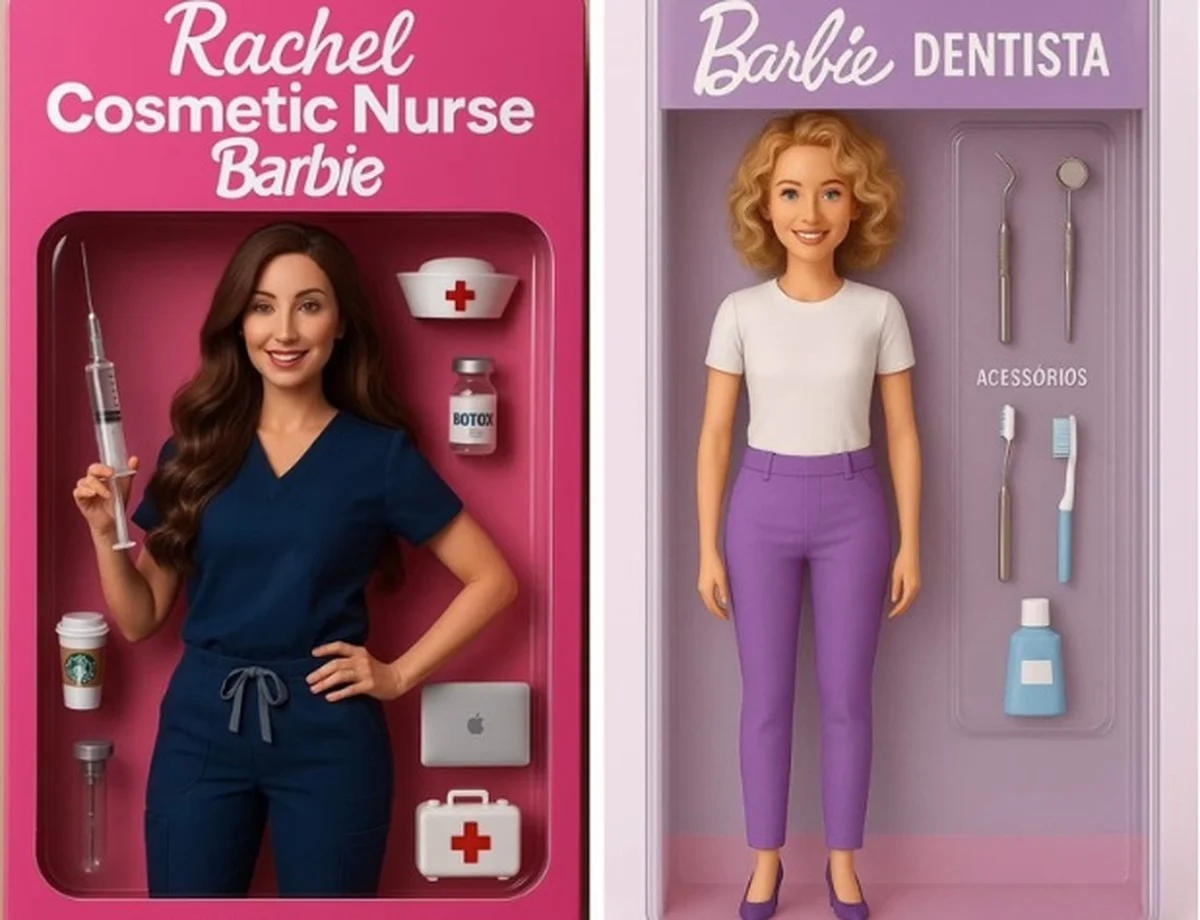12/04/2025
12/04/2025

NEW YORK, April 12: Scrolling through social media recently, many users may have noticed friends and influencers appearing in miniature form. This growing trend involves using generative artificial intelligence (AI) tools such as ChatGPT and Microsoft Copilot to transform people into pocket-sized action figures or dolls.
The concept has taken off online, with brands and influencers alike participating in the trend, often referred to as creating a “mini-me.” However, not everyone is on board. While the trend may seem harmless, some critics warn that the fear of missing out (FOMO) should not outweigh growing concerns about AI's energy consumption, environmental impact, and data use.
Despite sounding complex, the process is fairly straightforward. Users upload a photo of themselves to an AI tool along with written prompts describing how they want the final image to appear. These instructions typically include preferred accessories, clothing styles, packaging details, and even branding elements inspired by popular toy lines like Barbie.
Customization is key, with many people personalizing the dolls with their name, job title, and other specific features. That said, results can vary. Some images generated by AI tools have missed the mark, producing characters that bear little resemblance to the original person. Like other generative AI platforms, these tools can invent or assume details, sometimes inaccurately representing facial features or other characteristics.
This trend isn’t limited to individuals either. Brands such as beauty company Mario Badescu and even Royal Mail have embraced the AI mini-figure craze, creating their own stylized versions.
Digital trends are known for their fast rise—and equally fast fade. Social media users often feel pressure to participate before the moment passes. Jasmine Enberg, principal social media analyst at eMarketer, noted that generative AI allows people to create content more quickly and easily, accelerating participation in viral trends. However, this ease of creation may also speed up the rate at which users tire of the content.
Enberg believes AI-generated trends will likely become more common as AI tools become a staple in everyday digital life.
While the trend is lighthearted, it has drawn serious criticism, particularly regarding its environmental and ethical implications. Professor Gina Neff of Queen Mary University London told the BBC that generative AI tools like ChatGPT "burn through energy," with the data centers powering them consuming more electricity annually than many countries.
Lance Ulanoff, U.S. editor of TechRadar, humorously remarked that every AI meme created “kills a tree,” underscoring the real energy demands of AI content generation. He emphasized that although the statement is exaggerated, the environmental costs are significant and deserve thoughtful consideration.
Copyright concerns have also been raised, particularly regarding the use of copyrighted data to train these AI systems without proper compensation. Professor Neff called the AI-generated dolls a "triple threat to our privacy, our culture, and our planet," suggesting that the playful nature of such trends may obscure deeper issues.
Jo Bromilow, director of social and influencer strategy at MSL UK, questioned whether the entertainment value of the trend justifies its potential harm. “If AI is going to be used responsibly, it’s crucial to establish guardrails that ensure ethical and sustainable practices,” she said.
Creating an AI-generated doll often involves using a pre-written prompt found online, paired with a selfie and a detailed description of desired features, including accessories and packaging style. Users must often fine-tune their prompts and experiment with different combinations to achieve a satisfying result.
The generation process, while entertaining, can be time-consuming and inconsistent. For example, some users have reported inaccuracies in eye color, age appearance, and overall likeness. Depending on system load, image generation can take several minutes, making it a less seamless experience than expected.
As interest in the trend continues, so does the demand on AI servers—resources that could arguably be directed toward more impactful applications. While the novelty of an AI-generated action figure may bring a smile, it also serves as a reminder that every virtual creation comes with a real-world cost.


